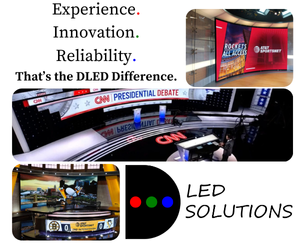Column: Build it, buy it or somewhere in between, part two – Standards and APIs

Subscribe to NCS for the latest news, project case studies and product announcements in broadcast technology, creative design and engineering delivered to your inbox.
In the last article, we looked at the different approaches to implementing the media supply chain – from building it yourself to buying something complete, and the mix of options that now lie in between. In this article, we’re going to look at a few of the factors that make that possible: standards, APIs and toolkits.
Standardization
About 15 years ago, when the majority of video was still viewed offline, there was much discussion about the convergence of broadcast and IT. At the time, the focus of this topic was really about the move from proprietary to commodity hardware components within the content chain. Ten years later, convergence with IT was again a topic, but this time it applied more broadly to the production and distribution of video and the focus was not on hardware, but on standards and processes.
Standardization has occurred in all parts of the media supply chain.
In 2004, as media organizations were just beginning to move to file-based video workflows, the file wrapper MXF, the Material eXchange Format, was introduced in an attempt to facilitate the seamless interchange of media files between systems. It took several years to achieve the breadth of interoperability that MXF promised but over the last decade MXF has certainly become the standard—or at least a dominant file format in media production. Over the last couple of years, MXF have been augmented by IMF, the Interoperable Master Format.
IMF still uses MXF as the file format for media components (audio, video etc), but other connections between these components and other structure and descriptive metadata are written in XML. The theory is that while only a handful of people can look at the 0s and 1s that make up an MXF file and understand them, the majority of people can open up an XML file in a basic text tool and understand its meaning.
Standards enable automation
When it comes to describing and monitoring the workflow steps that make up your media supply chain, you’d think there would be something better than a long chain of proprietary symbols… and there is. BPMN, the Business Process Model and Notation, provides a graphical notation for specifying business processes that can also be described using XML. BPMN is widely used across many industries to describe everything from human resource processes to making pizza. The graphical notation can also be used to monitor workflows with an intuitive diagrammatic representation of the workflows. While there is a little nuance in applying it to media workflows, BPMN, and other standards like it, enable the media industry to apply automation to the media supply chain in a clear and transparent way.
While MXF and BPMN are both published by standards bodies, other standardization comes from de facto standards. For example, while most storage vendors offer proprietary APIs, which are commonly the way to get the most functionality and flexibility from that system, many will also offer other interfaces, such as Amazon S3 (Amazon Simple Storage Service). This becomes the lowest common denominator for interfacing the storage with other components and means that new applications and services can be quickly onboarded.
The role of APIs and toolkits
APIs are not new to media production, but it is a strong indicator of their importance today that many products and platforms have done away with traditional product definitions in favor of simply publishing API documentation. The next step in this direction is the availability of toolkits that enable the rapid implementation of an API in new applications. An example of this would be the VidiCore Development Toolkit, VDT, that provide developers with starter templates that bring together UI and back end components, significantly shortening development time.
In the next and final article in this series, we will take a look at how the media supply chain fits into the broader video ecosystem and to integrate and extend your media supply chain to other systems.
This is part two of this series. Make sure to read part one.
Subscribe to NCS for the latest news, project case studies and product announcements in broadcast technology, creative design and engineering delivered to your inbox.




tags
Amazon Web Services, API, Arvato Systems, Ben Davenport, Broadcast Workflow, Cloud Broadcast Production, ip workflow, Media Supply Chain, Metadata, VidiCore, Vidispine
categories
Broadcast Engineering, Content, Content Delivery and Storage, Featured, Media Asset Management, Voices